I love a gathering of willful women and this gathering of Women In Media is certainly that! The energy we create collectively is inspiring and encouraging. But today I want to dive into the hard stuff and ask some tough questions. A speech such as this can only scratch the surface, but I’m hoping to prod a bigger, broader conversation about gender bias in news media.
This is a conversation we have to have.
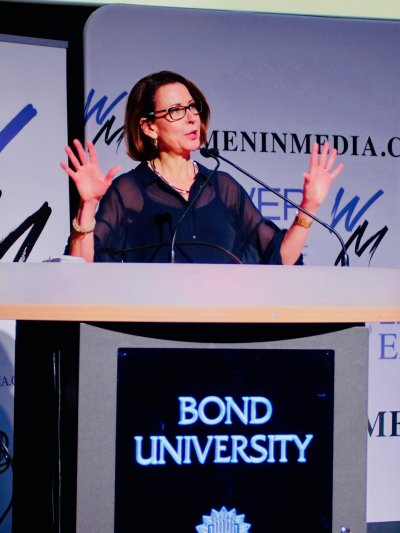
This is a conversation we have to have…
Thirty years ago when I was blowing dust balls off my desk at the 7.30 Report, at the old ABC Ripponlea studios in Melbourne, I got one of those calls. The Executive Producer of a commercial, primetime current affairs show wanted to meet and have a chat. I frocked up, met the guy and we had a terrific chat. He spoke. I listened. And nodded. He described his terrific show and a job opportunity. Did I want the job. Hell yeah!
As we shook hands he said, “Oh, and by the way, there are three things we don’t do stories about: blacks, poofs and spastics.” He wasn’t kidding.
“Oh, and by the way, there are three things we don’t do stories about: blacks, poofs and spastics.”
I kind of coughed… and then told him social justice issues were in fact my specialty. He laughed. He thought I was joking. I wasn’t.
But I left it at that. I didn’t know what else to say. I didn’t have the language, nor a sophisticated enough grasp of the arguments …or the confidence to unpack what he’d just expressed.
A couple of rocky years into that job, I started to get really cranky. Every morning as I walked into the station, through the backstage runway, I felt like I was squirted with testosterone even before I reached the office. The studio reeked of it. The network reeked of it. Our story output reeked of it.
But most importantly, our story telling was deeply embedded in it.
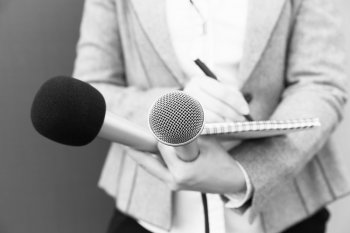
Male values and a masculine way of looking at the world dictated the stories we told, how we told them, what we put in, what we left out, who was given respect, who was viewed as an authority and who wasn’t.
I returned to my office to find a big, fat, black, rubber penis propped up on my desk. It was a kind of novel mouth gag. Ha. Ha. We all got the joke.
Soon the good girl veneer cracked and I noisily stomped into my boss’s office with a well-rehearsed complaint. All the international stories – the war & conflict stories – were handed to male reporters, while the ‘girls’ stayed home to specialise in colour and fluff. He listened, with his feet up on the desk and dirty undersoles in my face. Half way into my speech I ran out of puff, my arguments landed flat, my confidence deflated and I shuffled out. Later that day I returned to my office to find a big, fat, black, rubber penis propped up on my desk. It was a kind of novel mouth gag. Ha. Ha. We all got the joke.

When I got those regular phone calls late on Friday afternoons I’d groan. I’d be asked if I was wearing something short, then ordered to get on down to the Executive bar on Mahogany row, where all the news bosses gathered. I’d bite my lip, straighten my shoulders and walk on in for a couple of hours of drinking, smoking and bullshitting – a testosterone heaven.
Ok, I know what you’re thinking. That doesn’t happen now. News offices and current affairs programs are flooded with women these days. It’s not like that anymore. And on that – you are right. Thank goodness.
… the point is, that testosterone fuelled news culture is what we inherited.
But the point is that testosterone fuelled news culture – where news was shaped by and for men, around what men thought was newsworthy and what was not, where men decided what mattered and what didn’t, where men wrote the rules about how you get a story and who you get it from, where men decided what society valued and what it didn’t, what achievements were celebrated and what weren’t, and what behaviours were acceptable and what weren’t – the point is, that testosterone fuelled news culture is what we inherited.

The news culture women have moved into was not only developed by and for men, but news reporting was embedded with male values well before women were ever invited into the newsroom. They set the rules, well before we got to join the play.
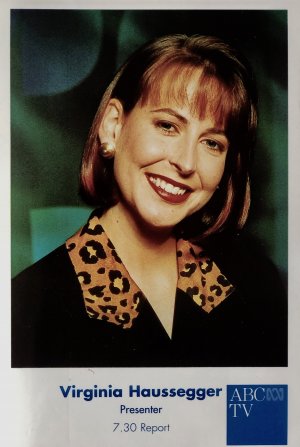
When I began my media career in the mid 80’s there were only five women journalists in primetime TV presenting roles, our eminent Women in Media Patron, Caroline Jones, being one of them. I watched her like a hawke from the moment she became the first woman to host the ABC’s 4 Corners. She was fascinating: smart, strong, smooth, gentle of voice and unflappably female. Most of all, Caroline Jones was the antithesis of all the male presenters who populated our screens. To my young eyes her ‘difference’ was daring.
The question is – as women, have we changed the game play?
Yes, women have flooded into media and across our screens since then. The question is – as women, have we changed the game play?
Have we changed not just the look of the place with more female faces around, but have we changed the predominate culture? Have we changed and reshaped the hyper masculinised model of news that we inherited?
The short answer is yes and no. But given the continued mindless propagation of gender stereotypes – clearly we have not changed things enough.
Back decades ago, when caught off guard, I simply didn’t have the language – or the wit – to respond to the outrageous sexism, racism, and white male privileged elitism I was subjected to.
But we do have that now. We know the arguments. We have the language. We use it in our reportage. But do we use it on ourselves – do we turn it on our own industry? Do we use our 21st century understanding of gender equity and inclusion to reshape and redefine what is news, what makes news… and how we tell the news?
You know – I would have thought so. But the evidence – the research suggests otherwise. Particularly when it comes to the reporting of men’s violence against women.
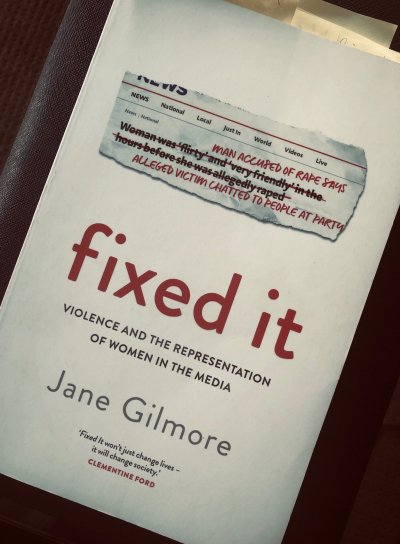
In her excellent and thoroughly researched book, ‘Fixed It’, journalist Jane Gilmore does a fabulous job of unpicking language bias in news media reporting and importantly – in news headlines.
I urge you all to read her book, but here are a few quick examples…
A headline from SMH:
‘Former Rugby Union star Craig Wells jailed for raping drunk teenager.’
Gilmore fixes the headline to reflect the heart of the story…‘Craig Wells guilty of using alcohol as a weapon in brutal rape of a 14 year old girl.’
‘Drunk teenager’? She was 14! As Gilmore suggests, ‘drunk’ implies that she was wanton and complicit in the crime that Wells chose to commit.
Townsville Bulletin:
‘Drink was the downfall of sex abuse former carer’
Gilmore’s fix… ‘Man who chose to rape disabled woman found guilty.’
BBC:
‘Fleckney murder inquiry: Man charged over bungalow death.’
Gilmore’s fix …‘Man charged over rape and murder of a 72 year old woman who was a person not a house.’
Or my personal favourite, a description of crime:
‘Woman was ‘flirty’ and ‘very friendly’ in the hours before she was allegedly raped.’
Gilmore’s fix … ‘Man accused of rape says alleged victim chatted to people at parties.’
In 2012 we all were shocked and dismayed by the horrific murder of Jill Meagher in Melbourne. An ABC producer, both beautiful and beloved. The media coverage of her death resulted in a huge out pouring of grief and support. A street march in her honour and in protest against such violence attracted thousands of people. They didn’t know Jill, but they’d seen the story and heard the loving descriptions of her by her colleagues on the news.
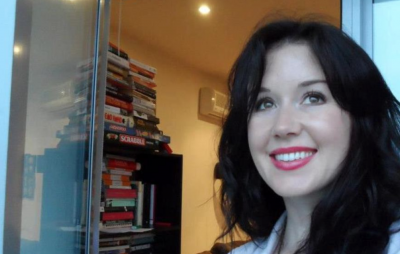
(Photo: Jill Meagher, ABC)
A year later in Melbourne, another brutal murder of a woman occurred. Like Jill, Tracy Connolly was walking home, alone, at night, when she was attacked. But the reason you don’t know her name – or her story – is because the media framed it so very differently.
It was all in the media framing.
Tracey was only referred to as ‘A St Kilda prostitute’… the headline ‘St Kilda prostitute killed.’ But as Gilmore writes, “Tracey was real, she was a person, she had a community who valued her and a boyfriend who loved her.” So why was she so dehumanised?
It was all in the media framing.
Assumptions about Tracey Connolly’s worth and value, given her profession as a sex worker, meant she was easily dismissed.
In media we are beset by binaries when it comes to how we represent women – they are either good women, or bad women, worthy or unworthy … goddess or whore
In media we are beset by binaries when it comes to how we represent women – they are either good women, or bad women; worthy or unworthy; deserving or cunning; an altruistic giver or selfish bitch. Or, as one of Australia’s greatest female media pioneers, Dr Anne Summers, so succinctly put it, ‘goddess or whore’.
Men are not subject to any such binary.
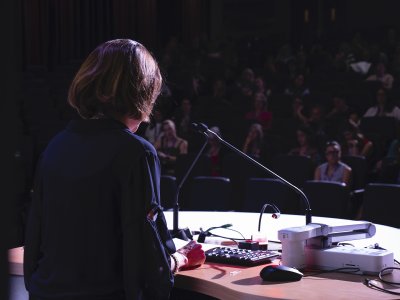
As media players we have a tremendous power. News media has always and continues to be the biggest influence on how the public view and understand the world around them. The way media frames an issue sets the parameters for how the community will internalise it. Which is why the language we use is so important.
Perhaps one of the most damaging things we have done to the progress of women in politics and leadership generally is to buy into the deeply sexist suggestion that women play a ‘gender card’.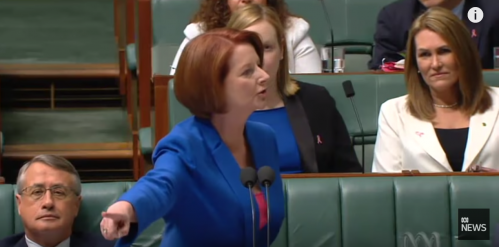 Following Gillard’s misogyny speech, former Minister Kelly O’Dwyer said Gillard used ‘gender’ as a ‘political weapon for the first time in Australian politics.’ Very quickly the idea of Gillard ‘playing a gender card’ spread through mainstream media like a rash. Did she? Didn’t she? Was it a cynical strategy to deflect? Or an emotional outpouring? Was she ‘playing gender’ as a desperate last resort?
Following Gillard’s misogyny speech, former Minister Kelly O’Dwyer said Gillard used ‘gender’ as a ‘political weapon for the first time in Australian politics.’ Very quickly the idea of Gillard ‘playing a gender card’ spread through mainstream media like a rash. Did she? Didn’t she? Was it a cynical strategy to deflect? Or an emotional outpouring? Was she ‘playing gender’ as a desperate last resort?
‘playing the gender card’ is not something media ever accuse men of doing. Why is that?
Whatever the view – we all got busy talking about the ‘gender card’ as if it was ‘a thing’.
Indeed we made it a thing. Interestingly, ‘playing the gender card’ is not something media ever accuse men of doing. Why is that?
According to academic Carol Johnson, “Masculinity is the unacknowledged and assumed universal – the ‘norm’ in public life – so men are not ever constructed as gendered.”
Yet we talk about women as if ‘gender’ is some kind of ace card or trick they pull out – when all else fails. As if gender is some kind of performance. Rather than a fact of birth. By buying into discussion on the ‘gender card’ we imply that women can flick their gender off and on. Even worse, we use the ‘gender card’ suggestion as some kind of metric to judge whether a woman is performing her gender correctly, or not.
As we slosh about in stereotypes we appear blinkered to what we are actually doing, wildly underestimating the impact of our thoughtless framing. Academic Julia Wood says,
“Of the many influences on how we view men and women, media are the most pervasive and one of the most powerful.”
She’s right. In a sense, those of us working in the media get to prescribe gender norms.
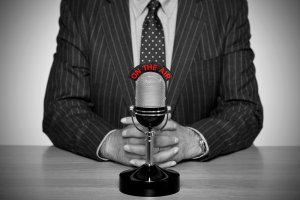
A recent global comparative survey by the University of Zurich (Humprecht and Esser 2017) echoed this; “The Media operate as an amplifier of gender stereotypes and thus reinforce stereotypes among their audiences.”
The way we choose to represent women – and men – not only sets the tone for the wider community, but allows us to act as the ‘gender mediator’. As such, we get to instruct what are the appropriate qualities for each gender. Indeed the power vested in us – as media practitioners, media players – is substantial.
Which, I’ve got to admit, is not something I fully understood when working in the thick of it.
But now, having recently stepped out of daily mainstream news – after 15 years as an ABC newsreader – I can see more clearly just how powerful, influential and instructive news media is on the lives of ordinary Australians. Which is why we must monitor our motives.
 (Photo: Women in Media 2019 Conference, Bond University)
(Photo: Women in Media 2019 Conference, Bond University)
And whilst on monitoring … what about our numbers?
Yes, there are plenty of women working in news media: indeed on TV in 2019 females far outnumber males as news and current affairs presenters. Women fill news rooms in numbers I could only dream of when I first started out.
So do women’s voices as experts, authorities and quoted sources fill our news stories?
In short no. Not at all.

The 2019 Women for Media Report: ‘You can’t be what you can’t see’, produced by the Women’s Leadership Institute Australia, provides very sobering reading. And a big shot out to journalist Jenna Price who conducted this research and Carol Schwartz who funded it and has kept this project alive.
The online news media sample Price’s team used is small, but their findings closely reflect international surveys on much larger scales. Crunched down – the results are this:
- Women are quoted as sources – that is as experts, or the authority on something – much less than men. On average women are quoted at a rate of 34%, compared to men at 66% percent.
- Women are much more likely to be called upon to provide public opinion or anecdote, whereas men are called upon for expertise and authoritative analysis.
- The Financial Review was found to have the lowest percentage of female sources with just 14%
- While Buzzfeed had the highest at 59%
- Female sources were quoted highest in stories about celebrities and royals – 59%
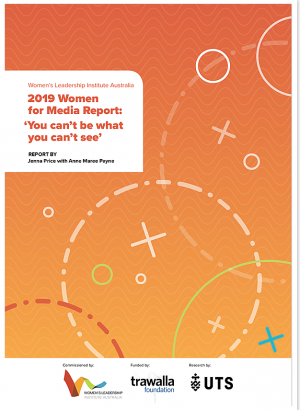
- In Law, crime and Justice – just 21%
- Business and finance stories – 18%
- Sport – 5%
- Women write only 38% of Op Eds
- And women write only 16% of Op Eds about government and politics
While the research found a 50/50 gender split in the number of journalists, the stories they wrote and issues they covered differed substantially. Women were found to write:
- 76% of the stories about celebrities and Royals
- 40% of stories about politics, business, finance and law
- only 12% of sport stories.
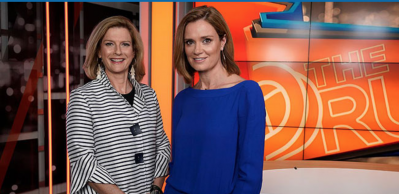 (Photo: Ellen Fanning and Julia Baird, hosts of The Drum, ABC)
(Photo: Ellen Fanning and Julia Baird, hosts of The Drum, ABC)
The ABC’s excellent work on its 50/50 Project is making substantial headway in improving the representation of women across all its news platforms, by dramatically improving the rates of female talent. Hats off to Riannon Hobbins and Flip Prior who have devoted themselves for the past 12 months to really shift the dial on this.
But this is just one media outlet.
we all need to work harder to seek out women’s voices. They are there. We just need to look.
Across all media platforms, all outlets, we all need to work harder to seek out women’s voices. They are there. We just need to look.
The power vested in you as media professionals cannot be over stated.
When I set out as a journalist all those decades ago, with a bee in my bonnet about the lack of women around me, while I watched men wield the power and make the rules – I honestly thought we would be much further down the track of women’s representation and leadership than we are today.
Together now, as women media professionals, you have the power to re-construct gender for the 21st century – if you chose to.
We could sit on our hands … and ignore the growing evidence of regressive attitudes to gender equality
Or we could all do nothing. We could sit on our hands, assume things will eventually just ‘even up’ and ignore the growing evidence of regressive attitudes to gender equality – and the worrying signs of a growing male backlash.
We could do nothing.
Or we could use the language we now have, along with evidence based argument to force change, to improve the representation of women in news media. And to re-shape news frames to more fairly reflect and value women’s lives.
My dear old mum used to say when someone really honourable died, “Oh, they broke the mould when he passed away”.
Well, I say… some moulds need to be broken. And new, better, fairer ones built from the bottom up.
That’s the task you face.
Good luck!

This speech was delivered at the Women in Media 2019 annual conference on the Gold Coast, Bond University, 14 September.




